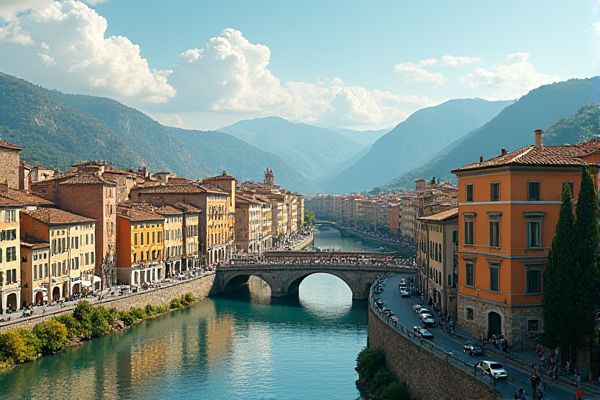
Education system and best schools in Italy: Italian education divided into five stages. Mandatory schooling begins at age six. Primary school lasts five years. Middle school lasts three years. High school offers three pathways. Exams required for secondary completion. Public and private schooling options. International schools available in major cities. Italian language primarily used in schools. Renowned universities like University of Bologna.
Italian education divided into five stages.
The Italian education system is methodically divided into five stages: kindergarten (Scuola dell'Infanzia), primary school (Scuola Primaria), lower secondary school (Scuola Secondaria di Primo Grado), upper secondary school (Scuola Secondaria di Secondo Grado), and university (Università). Education is compulsory for children from 6 to 16 years of age. For a more detailed exploration of how this system is structured, you can visit the comprehensive resource on the Education System in Italy.
Mandatory schooling begins at age six.
Mandatory schooling in Italy begins at the age of six and is compulsory until the age of 16, divided into three levels: primary, lower secondary, and upper secondary. Public education is free for all resident children, regardless of nationality, and is considered to be of high quality, equivalent or even higher than private schools. For more detailed information, the education guide for Italy expats provides a comprehensive overview of the system and what to expect as an expatriate with children in Italy.
Primary school lasts five years.
Primary school in Italy, known as *Scuola Primaria*, lasts five years and is compulsory for children from ages 6 to 11, following a standardized curriculum that includes subjects such as Italian, English, mathematics, and physical education. For more detailed information, you can refer to the comprehensive guide on primary schools in Italy available at Expatica, which offers valuable insights into the educational system. This stage of education is crucial for laying the foundational skills necessary for the children's future academic and personal development.
Middle school lasts three years.
In Italy, middle school, known as *Scuola Secondaria di Primo Grado* or *Scuola Media*, lasts three years from the age of 11 to 14 and is compulsory. It consolidates the subjects taught at primary school, adding technology, music, and a language other than English, with a common program of study for all pupils.
High school offers three pathways.
In Italy, high school (scuola secondaria di secondo grado) offers three main pathways: Liceo (academic high school with various specializations like Liceo Classico, Liceo Scientifico, and Liceo Linguistico), Istituto Tecnico (technical high school with specializations in fields like economy, administration, and technology), and Istituto Professionale (professional high school focused on practical subjects such as engineering, agriculture, and gastronomy). To explore a comprehensive overview of these educational pathways, visit the Italian Education System resource which delves into the intricacies of these diverse options, providing insights on what each path entails for students who aim for either academic pursuits or practical professions.
Exams required for secondary completion.
To complete Upper Secondary Education in Italy, students must pass the "Esame di Stato" (State Exam), a crucial examination that determines their eligibility for university admission and is taken at the end of the 5-year upper secondary school program. For more information, visit the comprehensive guide on Secondary Schools in Italy.
Public and private schooling options.
Italy's education system includes both public and private schools, with public schools, funded by the government, dominating the educational landscape and offering free education to approximately 90% of students. Private schools, while less common, often provide smaller class sizes, more personalized attention, and additional programs, resulting in generally higher academic outcomes compared to public schools. For a detailed insight into the dynamics of this educational structure, you can visit the Education System in Italy Explained. Understanding the balance between these institutions highlights the varied opportunities available to students within Italy's diverse schooling environment.
International schools available in major cities.
Italy hosts numerous international schools, particularly in major cities like Rome, Milan, Florence, and Naples. These schools offer various curricula, including the International Baccalaureate (IB), IGCSE, and British and American curricula, providing internationally recognized qualifications and a diverse, progressive learning environment.
Italian language primarily used in schools.
In Italy, the primary language used in schools is Italian, with students receiving a basic education in Italian, along with other subjects such as English, mathematics, and sciences, from primary school through to upper secondary school. For more detailed information on this system, you can visit the Education System on the Scholaro website.
Renowned universities like University of Bologna.
The University of Bologna, founded in 1088, is the world's oldest continuously operating university and a leading academic institution in Italy and Europe. It offers a wide range of programs, has multiple campuses, and is known for its significant contributions, including the Bologna Process aimed at standardizing European higher education systems.
